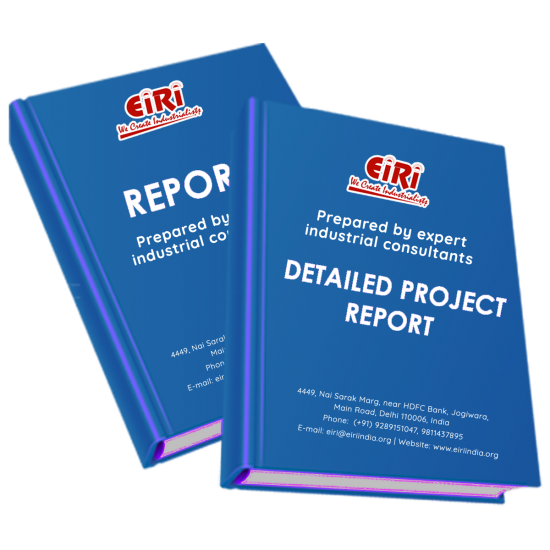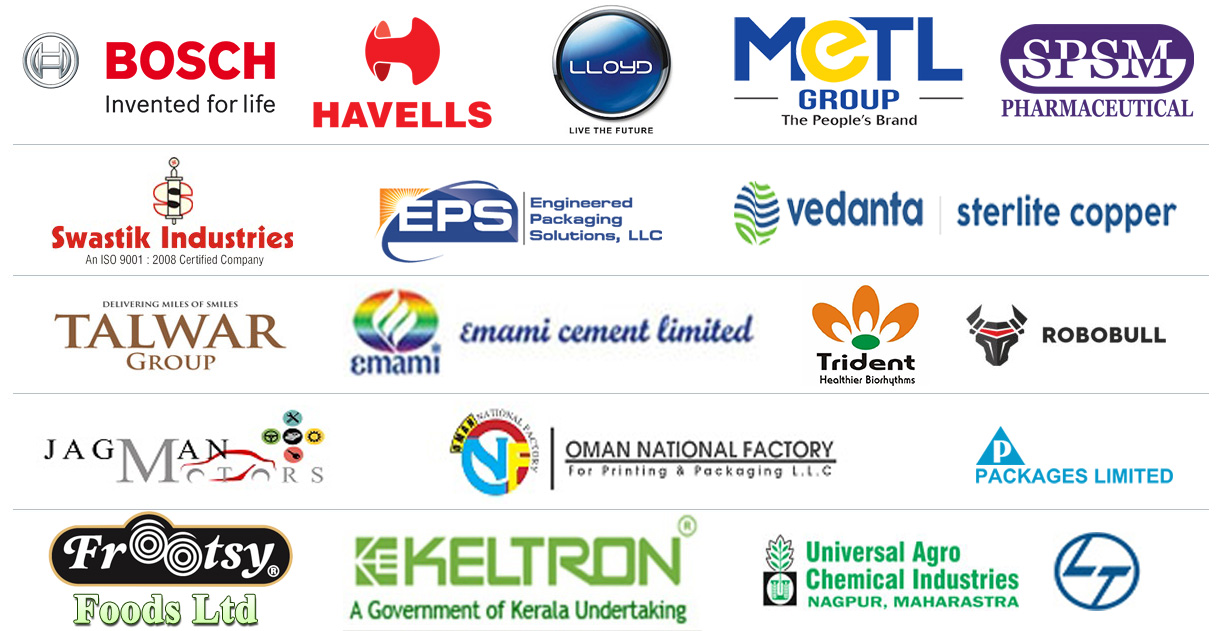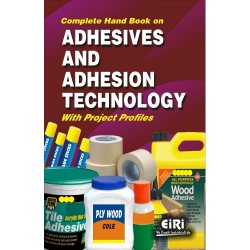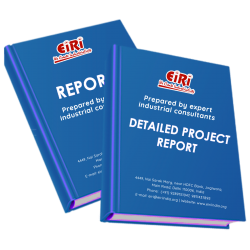Detailed Project Report on wood plastic composite board (wpc)

- More than 40 years of experience
- Managed by expert industrial consultants
- ISO 9001-2015 Certified
- Registered under MSME, UAM No: DL01E0012000
- 24/5 Research Support
Get your quesries resolved from an industry expert. Ask your queries before report or book purchase. - Custom Research Service
Speak to the our consultant to design an exclusive study to serve your research needs. - Quality Assurance
All reports are prepared by highly qualified consultants & verified by a panel of experts. - Information Security
Your personal & confidential information is safe & secure.
WOOD PLASTIC COMPOSITE BOARD (WPC)
[CODE NO.3283]
Wood–plastic composites (WPCs) are a form of composite combining wood-based elements with polymers. The processes for manufacturing WPCs include extrusion, injection molding, and compression molding or thermoforming (pressing). Newer manufacturing processes for WPCs include additive manufacturing via fused layer modeling and laser sintering. An important constraint for polymers used in WPCs is requiring process conditions (melt temperature, pressure) that will not thermally degrade the wood filler. Wood degrades around 220 °C; thus, general-purpose polymers like polyethylene and poly vinyl chloride are typically used for manufacturing WPCs. Wood fibers are inherently hydrophilic because of the hydroxyl groups contained in the cellulose and hemicellulose molecular chains. Thus, modification of the wood fiber via chemical or physical treatments is very critical to making improved WPCs. The most abundant profiles made from wood–plastic composites are boards or lumber used in outdoor decking applications. Although early WPC products were mainly extruded for profiled sections, nowadays, many injected parts made of WPC are being introduced for various industries, including electrical casings, packaging, daily living supplies, and civil engineering applications. Mold and mildew and color fading of WPCs tend to be the durability issues of prime importance for WPCs. Most recent research on WPC durability focuses on studies to better understand the mechanisms contributing to various degradation issues as well as methods to improve durability. Most WPC products in the USA are utilized in building materials with few exceptions for residential and commercial building applications, which means that building codes are the most important national rules for the WPC manufacturers. New developments are being made especially in
the area of nano additives for WPCs including nanocellulose. Recently, the trend of patent registrations for WPCs has shifted to new products or applications instead of the materials itself.
Wood-plastic composites (WPCs) are composite materials made of wood fiber/wood flour and thermoplastic(s) (includes PE, PP, PVC etc.).
In addition to wood fiber and plastic, WPCs can also contain other ligno-cellulosic and/or inorganic filler materials. WPCs are a subset of a larger category of materials called natural fiber plastic composites (NFPCs), which may contain no cellulose-based fiber fillers such as pulp fibers, peanut hulls, bamboo, straw, digestate etc.
Chemical additives seem practically "invisible" (except mineral fillers and pigments, if added) in the composite structure. They provide for integration of polymer and wood flour (powder) while facilitating optimal processing conditions.
In recent years, people in the flooring industry starts referring to WPC as a type of floor that has a basic structure of top vinyl veneer plus a rigid extruded core (the core can be made without any wood fiber). WPC is now an established product category within LVT. This type of WPC is different than the WPC decking and is not intended for outdoor usage.
COST ESTIMATION
Plant Capacity : 1024.00 sq.ft./day
land & Building (500 Sq.Mtr) : Rented
Plant & Machinery : Rs. 30.00 Lacs
Working Capital for 1 Month : Rs. 10.69 Lacs
Total Capital Investment : Rs. 43.69 Lacs
Rate of Return : 52%
Break Even Point : 61%
INTRODUCTION
USES & APPLICATIONS
OURDOOR APPLICATION OF WPC
RAW MATERIALS
POLYMERS
WOOD
ADDITIVES
ADVANTAGE AND DISADVANTAGE OF WPC
ADVANCE MATERIALS FOR WPC
WOOD MODIFICATION
ADDITIVES
PROFILES
ASPECT OF WPC DURABILITY
STRUCTURAL
WEATHERING STUDIES
FIGURE POLYETHYLENE (PE) – BASED COMPOSITE
DIFFERENT PROCESSES FOR WOOD PLASTIC COMPOSITES
EXTRUSION PROCESSING
SINGLE-SCREW EXTRUDER
COUNTER-ROTATING TWIN-SCREW EXTRUSION
COMPOSITE SYSTEM
WOOD RUDER
MISCELLANEOUS POST-EXTRUDER UNIT OPERATIONS
WPC MANUFACTURING TECHNIQUES
WPC REPROCESSING
WPC NEW MANUFACTURING TECHNOLOGY
EXPERIMENTAL STAGES
PILOT EXPERIMENTATIONS
PREREQUISITE STAGE
STAGE 1
STAGE 2
STAGE 3
PROCESSES EXPERIMENTAL SETTINGS
FIG. ILLUSTRATIVE PROCESS FLOW CHART OF WPC MANUFACTURING
COMPONENTS OF WPC
MATRIX COMPONENT
THERMOSETS
THERMOPLASTICS
WOOD COMPONENT
WOOD SPECIES
WOOD PARTICLE SIZE
MARKET SURVEY
MARKET SHARE
QUALITY OF WPC IN INDIA
DESPITE BEING A PLASTIC COMPOSITE, WHY IS WPC CALLED
A GREEN MATERIAL?
FUTURE OF WPC IN INDIA
MARKET SURVEY (GLOBAL)
NEW MARKET- WPC
FENCING FUTURE
THREAT FROM THE EAST?
FEWER, BIGGER PLAYERS
ADDITIVES CREATE RECIPE FOR GROWTH SUMMARY FIGURE GLOBAL MARKET FOR APPLICATIONS OF WPCS, CELLULOSICS, PLASTIC
LUMBER, AND NATURAL FIBER COMPOSITES, 2008-2016 (METRIC TONS)
EXPORT OF WPC FROM INDIA
DETAILED IMPORT DATA
OF WOOD PLASTIC COMPOSITE
PRESENT MANUFACTURERS OF
WOOD PLASTIC COMPOSITE BOARDS LINE
FORMULATION OF WPC BOARD
COMBINATION OF WPC BOARD
MANUFACTURING PROCESS OF WPC BOARD
PROCESS FLOW DIAGRAM OF WPC BOARD
PRODUCTION OF WOOD PLASTIC COMPOSITE
TECHNICAL DETAILS OF WOOD PLASTIC COMPOSITES
THE ROLE OF RESINS:-
VARIATION IN PLASTIC FEEDSTOCK:-
PROCESSING CONSIDERATION
OF WOOD PLASTIC COMPOSITES
MOISTURE AND TEMPERATURE
THE WPC MANUFACTURING PROCESS
WITH EXTRUSION FORMING
DETAILS OF RAW MATERIALS
TABLE 2.0: FUNCTIONS OF ADDITIVES USED IN THERMOPLASTIC COMPOSITES
MECHANICAL PROPERTIES OF WOOD-POLYPROPYLENE COMPOSITES*
TECHNICAL DETAILS OF PVC WPC FOAM BOARD LINE
TECHNICAL/TURNKEY CONSULTANT FOR SETTINGUP WPC PLANT
SUPPLIERS OF PLANT & MACHINERIES (IMPORTED)
SUPPLIERS OF PLANT & MACHINERIES (INDIAN)
MANUFACTURERS/SUPLIERS OF PLANT & MACHINERY
EXTRUDERS
PRESSING MACHINE
COOLING TOWERS
BOILER
GENERATOR SET (D.G. SET)
MANUFACTURERS/SUPPLIERS OF RAW MATERIALS
WOOD FLOUR
PLASTIC POLYMERS
COUPLING AGENT
ADDITIVES
APPENDIX – A:
1. COST OF PLANT ECONOMICS
2. LAND & BUILDING
3. PLANT AND MACHINERY
4. FIXED CAPITAL INVESTMENT
5. RAW MATERIAL
6. SALARY AND WAGES
7. UTILITIES AND OVERHEADS
8. TOTAL WORKING CAPITAL
9. COST OF PRODUCTION
10. PROFITABILITY ANALYSIS
11. BREAK EVEN POINT
12. RESOURCES OF FINANCE
13. INTEREST CHART
14. DEPRECIATION CHART
15. CASH FLOW STATEMENT
16. PROJECTED BALANCE SHEET
How to Make Project Report?
Detailed Project Report (DPR) includes Present Market Position and Expected Future Demand, Technology, Manufacturing Process, Investment Opportunity, Plant Economics and Project Financials. comprehensive analysis from industry covering detailed reporting and evaluates the position of the industry by providing insights to the SWOT analysis of the industry.
Each report include Plant Capacity, requirement of Land & Building, Plant & Machinery, Flow Sheet Diagram, Raw Materials detail with suppliers list, Total Capital Investment along with detailed calculation on Rate of Return, Break-Even Analysis and Profitability Analysis. The report also provides a birds eye view of the global industry with details on projected market size and then progresses to evaluate the industry in detail.
We can prepare detailed project report on any industry as per your requirement.
We can also modify the project capacity and project cost as per your requirement. If you are planning to start a business, contact us today.
Detailed Project Report (DPR) gives you access to decisive data such as:
- Market growth drivers
- Factors limiting market growth
- Current market trends
- Market structure
- Key highlights
Overview of key market forces propelling and restraining market growth:
- Up-to-date analyses of market trends and technological improvements
- Pin-point analyses of market competition dynamics to offer you a competitive edge major competitors
- An array of graphics, BEP analysis of major industry segments
- Detailed analyses of industry trends
- A well-defined technological growth with an impact-analysis
- A clear understanding of the competitive landscape and key product segments
Need Customized Project Report?
- Ask for FREE project related details with our consultant/industry expert.
- Share your specific research requirements for customized project report.
- Request for due diligence and consumer centric studies.
- Still haven't found what you're looking for? Speak to our Custom Research Team
About Engineers India Research Institute:
Note: We can also prepare project report on any subject based on your requirement and country. If you need, we can modify the project capacity and project cost based on your requirement.
Our Clients

Our Approach
- Our research reports comprehensively cover Indian markets (can be modified as per your country), present investigation, standpoint and gauge for a time of five years*.
- The market conjectures are produced on the premise of optional research and are cross-accepted through associations with the business players
- We use dependable wellsprings of data and databases. What's more, data from such sources is handled by us and incorporated into the report
Why buy EIRI reports?
- Our project reports include detailed analysis that help to get industry Present Market Position and Expected Future Demand.
- Offer real analysis driving variables for the business and most recent business sector patterns in the business
- This report comprehends the present status of the business by clarifying a complete SWOT examination and investigation of the interest supply circumstance
- Report gives investigation and top to bottom money related correlation of real players/competitors
- The report gives gauges of key parameters which foresees the business execution






















